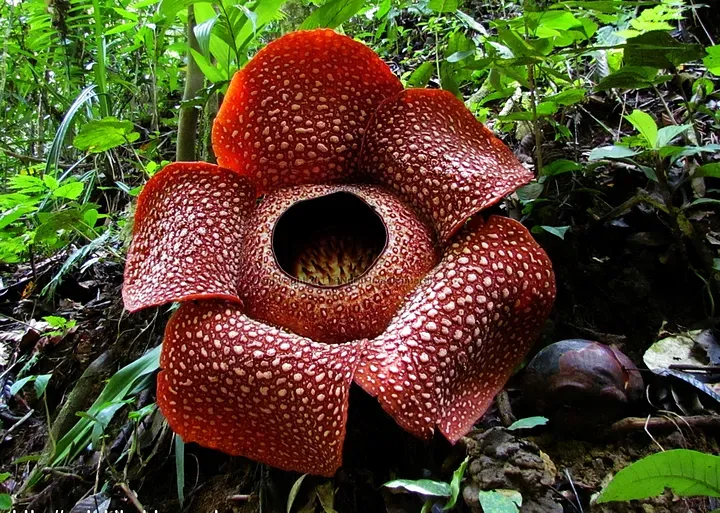Unravelling Rafflesia- A Most Unusual Parasitic Plant.

Source
It makes a very large and very unpleasant smelling flower that also steals genes.
picture of a large reddish brown flower called Rafflesia
Picture of Rafflesia arnoldii from a post by lazypenguins
There are so many beautiful, fascinating and unusual creatures living on this wondrous planet that we inhabit. Everything from the smallest viral particles, whose claim to biological life is still being debated, to giant whales and elephants.
So you’d think that I would have already heard about the Rafflesia flowers, right?
Because one of the species in this genus makes the largest, stinkiest flower ever recorded on Earth.
Its flowers can reach a metre or more (~ 3 feet) in width and their smell has been compared to that of rotting meat. In the area of the world where they grow, the locals also call them meat or corpse flowers because of the smell.
eeeww!
But until I stumbled across it in a short little info piece in Scientific American, I had never heard about it.
Well how can a curious biologist and plant lover like myself not correct such a big gap in my knowledge?
And if I’ve piqued your curiosity, then I invite you to tag along to learn all about these very unusual parasitic plants.
I warn you in advance, these are not simple stick-the-seeds-in-the-ground and watch them grow sort of plants.
Unh Unh.
Way more interesting than that.
So let’s follow our noses and see what we can sniff out about them.
…the largest, stinkiest flower ever recorded on Earth
Basic info
The Rafflesia plant was first discovered by the Western world in 1818 in the tropical forest of Bengkulu (Sumatra), somewhere near the river Manna, Lubuk Tapi, South Bengkulu. As a result, Bengkulu then became famous as The Land of Rafflesia.
It is an endemic plant in Sumatra, and Kerinci Seblat National Park is an area of major conservation of this species.
In spite of this, the plant is in serious decline, due to several factors including climate change altering it’s habitat and human tourists…
Thanks for reading my post.
Source